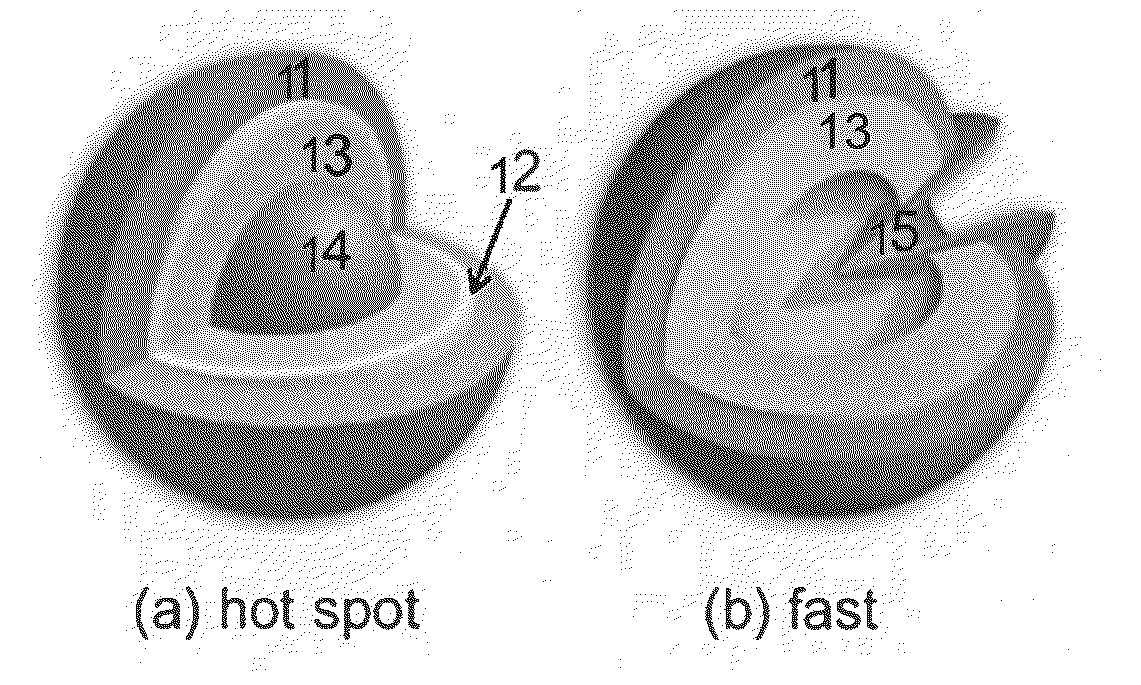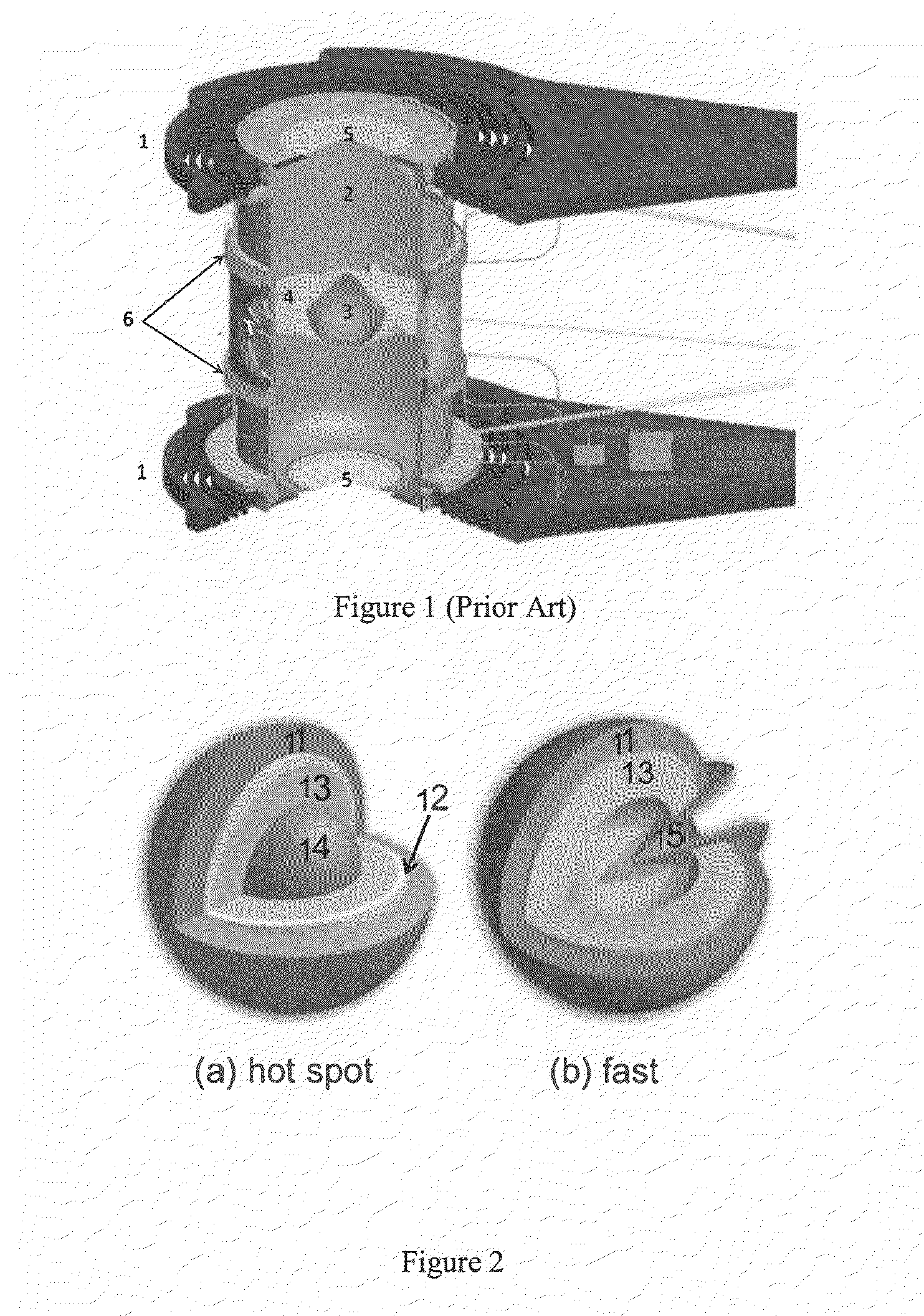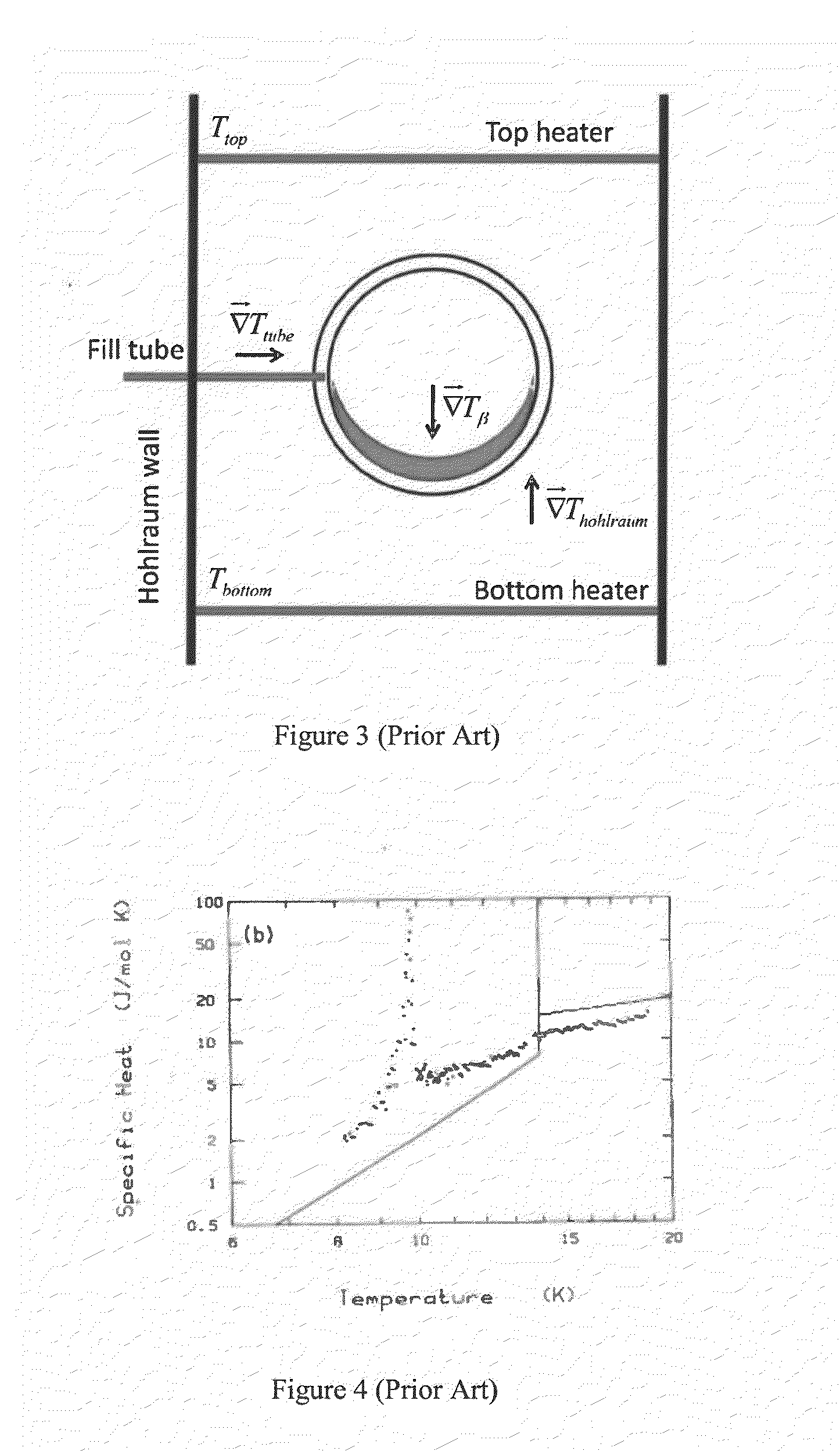Porous Scaffolds for Hydrogen Fuel in Inertial Confinement Fusion Capsules
- Summary
- Abstract
- Description
- Claims
- Application Information
AI Technical Summary
Benefits of technology
Problems solved by technology
Method used
Image
Examples
Embodiment Construction
[0024]FIG. 1 illustrates a prior art ICF fuel target assembly for hot-spot ignition experiments at the National Ignition Facility. The components illustrated include cryocooling single-crystal silicon arms 1 connected to the cold finger of a cryostat and a gold hohlraum 2. A fuel capsule 3 having a beryllium metal, carbon, or plastic ablator shell with an outer diameter of about 2 mm is positioned in the center of the hohlraum 2. It is supported there by about 10-100-nm-thick polymer “tents”4, which center and hold the ablator shell in the hohlraum 2. Laser entrance holes 5 at each end of the hohlraum 2 are sealed with about 500-nm-thick polymer films. Heaters 6 control the growth and uniformity of the solid hydrogen (DT) fuel layer (not shown) inside of the ablator shell of the capsule 3. In the NIF experiments, laser beams enter the hohlraum through the laser entrance holes 5, irradiating the interior of the hohlraum 2. X-rays from the hohlraum 5 then strike the fuel capsule 3 and...
PUM
| Property | Measurement | Unit |
|---|---|---|
| Thickness | aaaaa | aaaaa |
| Thickness | aaaaa | aaaaa |
| Thickness | aaaaa | aaaaa |
Abstract
Description
Claims
Application Information
 Login to View More
Login to View More - R&D
- Intellectual Property
- Life Sciences
- Materials
- Tech Scout
- Unparalleled Data Quality
- Higher Quality Content
- 60% Fewer Hallucinations
Browse by: Latest US Patents, China's latest patents, Technical Efficacy Thesaurus, Application Domain, Technology Topic, Popular Technical Reports.
© 2025 PatSnap. All rights reserved.Legal|Privacy policy|Modern Slavery Act Transparency Statement|Sitemap|About US| Contact US: help@patsnap.com



